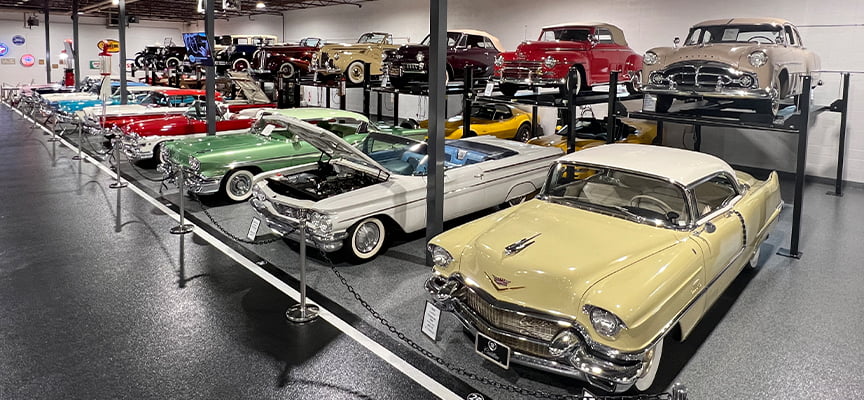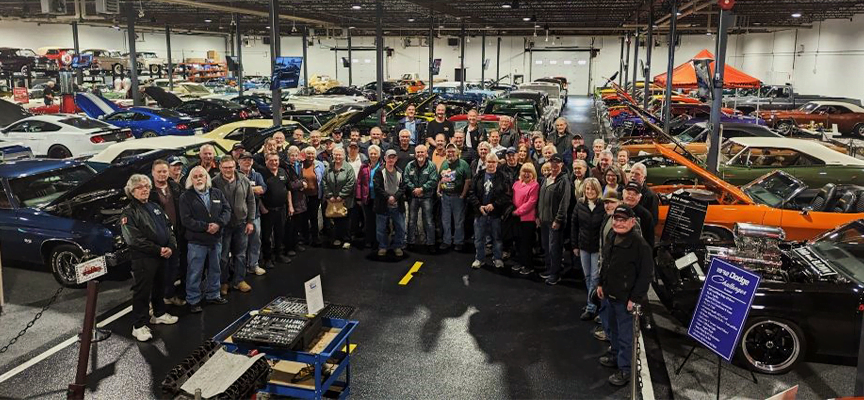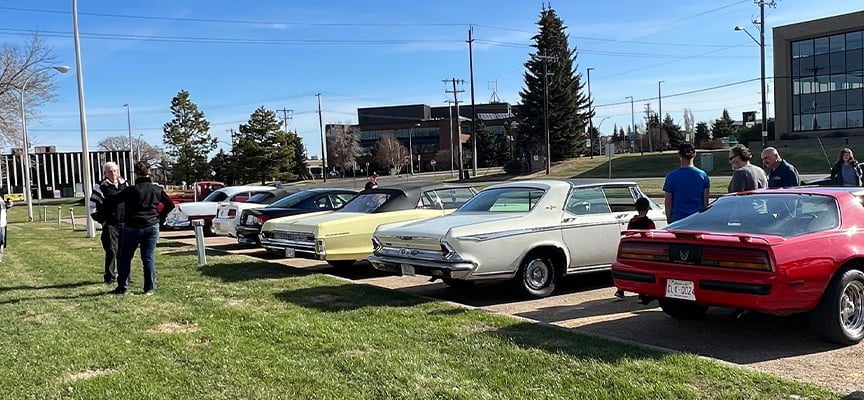Enzo Ferrari once described the design of the iconic 1961 Jaguar E-Type as “the most beautiful car ever made.” This level of praise from a rival speaks volumes about classic cars’ timeless allure and influence. Classic cars aren’t merely relics of the past but the blueprints that have shaped the modern automotive landscape.
Each visit to a classic car museum reveals the deep connections between the past and present, showcasing how the elegance of vintage vehicles continues to inspire today’s automotive designers.
Join us as we explore these timeless vehicles’ rich history and lasting impact on modern automotive design.
Classic Car Museum: A Gateway To The Past
Classic car museums are more than just places to showcase vintage vehicles; they offer a glimpse into the history and evolution of automotive design. These museums provide invaluable insights into the craftsmanship, innovation, and artistry that went into creating the cars of yesteryear.
For car enthusiasts and designers alike, visiting a classic car museum is a journey that has influenced modern car design. One of the most profound impacts of classic cars on modern design is the enduring legacy of design excellence.
Classic cars from the mid-20th century, such as the 1957 Chevrolet Bel Air or the 1961 Jaguar E-Type, set a high bar for aesthetics and performance. Modern car designers often draw inspiration from the iconic styles of these classic car designs.
Technological Innovations Rooted In The Past
Classic cars were not just about looks but also a playground for technological innovation. Many features we take for granted in today’s vehicles originated from classic designs.
Safety features like seat belts, crumple zones, and anti-lock braking systems have their roots in classic car engineering. For example, the Volvo PV544, introduced in 1959, was the first car with three-point seat belts as standard equipment.
This pioneering move set the stage for modern safety standards, proving that classic cars were ahead of their time in prioritizing driver and passenger safety.
Moreover, classic cars also laid the groundwork for modern engineering solutions. The innovative designs of engines, suspensions, and aerodynamics in classic cars continue to influence contemporary automotive engineering.
With its air-cooled rear-engine layout, the Volkswagen Beetle demonstrated an alternative approach to car design that inspired future generations of engineers to think outside the box.
The Emotional Connection To Classic Cars
The allure of classic cars extends beyond their design and technology; it is deeply rooted in the emotional connection they evoke. Classic car museums play a crucial role in preserving this connection by showcasing and telling the stories behind these automotive treasures.
For many people, classic cars represent a connection to their past. They evoke memories of a bygone era, reminding us of simpler times and the joy of driving. Automakers often incorporate vintage-inspired elements into their designs to tap into this emotional connection, creating cars that resonate with both older and younger generations.
Classic car museums excel in the art of storytelling. Each car on display has a unique story, from its conception and design to its journey through history. These stories add depth and context to the cars, making them more than machines. They become symbols of human ingenuity, passion, and creativity.
Modern Car Shows: Celebrating Classic Influence
Modern car shows often feature classic cars alongside contemporary models, highlighting the enduring influence of vintage vehicles on today’s automotive landscape. These events provide a platform for car enthusiasts, designers, and engineers to appreciate the beauty and innovation of classic cars while exploring how they continue to shape the future of automotive design.
At these car shows, modern cars that pay tribute to classic designs are common. For example, the Dodge Challenger and the Chevrolet Camaro are modern muscle cars that draw heavily from their 1960s predecessors.
These vehicles blend old-school aesthetics with cutting-edge technology, creating a unique fusion that appeals to a wide audience.
Moreover, car shows also serve as inspiration for future innovations. These events highlight the continuous evolution of automotive design by showcasing classic cars alongside the latest models. Designers and engineers can study past innovations to inform their future creations, ensuring that the legacy of classic cars lives on in modern vehicles.
The Cultural Impact Of Classic Cars
Classic cars have left an indelible mark on popular culture. They are featured prominently in movies, television shows, and music, symbolizing freedom, adventure, and rebellion.
This cultural impact extends to modern automotive design, where the iconic status of classic cars continues to influence how new vehicles are perceived and marketed.
Classic cars are often the stars of the screen, immortalized in films and TV shows that capture their essence. The Ford Mustang GT from “Bullitt,” the DeLorean from “Back to the Future,” and the Aston Martin DB5 from the James Bond series are just a few examples of classic cars that have achieved legendary status.
Moreover, classic cars have influenced music, particularly rock and roll and hip-hop. Songs celebrating cars, such as The Beach Boys’ “Little Deuce Coupe” and Bruce Springsteen’s “Pink Cadillac,” highlight their cultural significance.
The Future Of Classic Car Design In Modern Vehicles
As we look to the future, it’s clear that classic cars’ impact on modern automotive design will continue to be profound. The lessons learned from the past will guide future innovations, ensuring that the spirit of classic cars lives on in new and exciting ways.
Sustainability is a major focus in modern automotive design, and classic cars offer valuable lessons. Many classic cars were built to last, with durable materials and timeless designs that have stood the test of time.
Modern designers can draw inspiration from this approach, creating vehicles that are not only beautiful but also sustainable and long-lasting. Additionally, classic car museums will continue to play a crucial role in shaping the future of automotive design.
By preserving and showcasing the innovations of the past, these museums provide a rich source of inspiration for designers and engineers. They serve as a reminder that while technology and materials may evolve, the fundamental principles of good design remain constant.
About Us
Yesterday’s Auto Gallery is dedicated to preserving and showcasing the rich history of classic cars. Our museum offers a unique glimpse into the automotive innovations of the past, inspiring future generations of car enthusiasts and designers.
Contact us to learn more about our collection and upcoming events.









